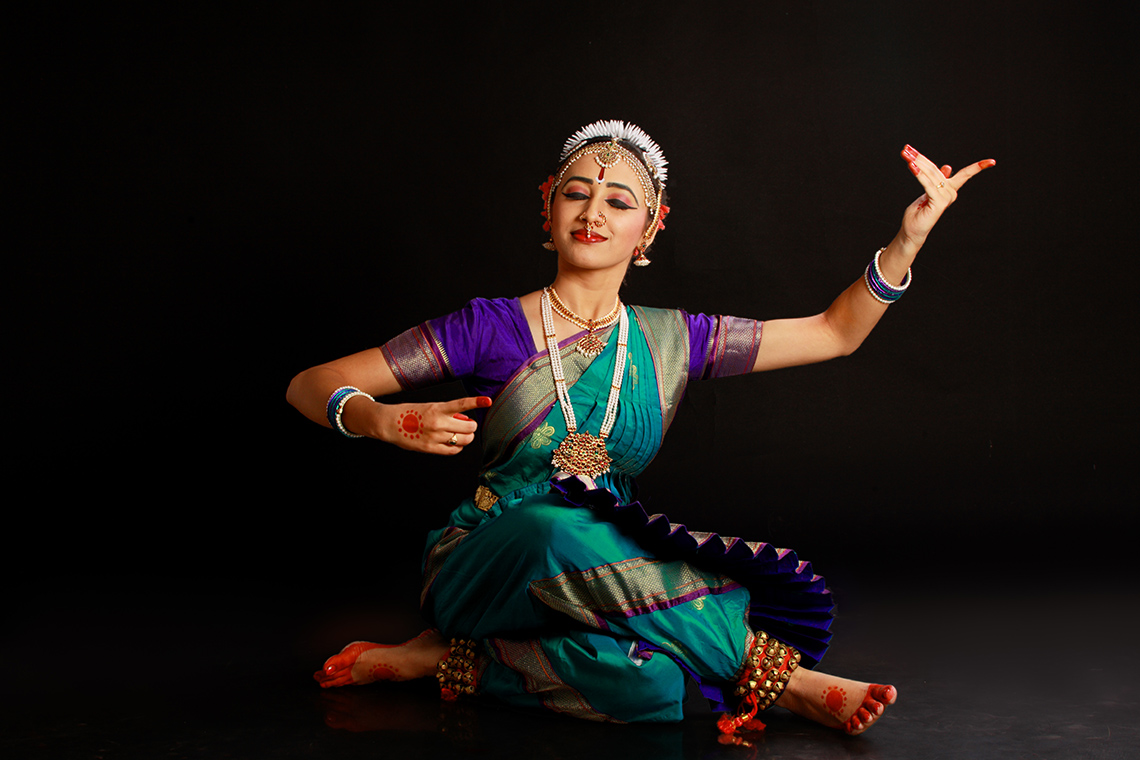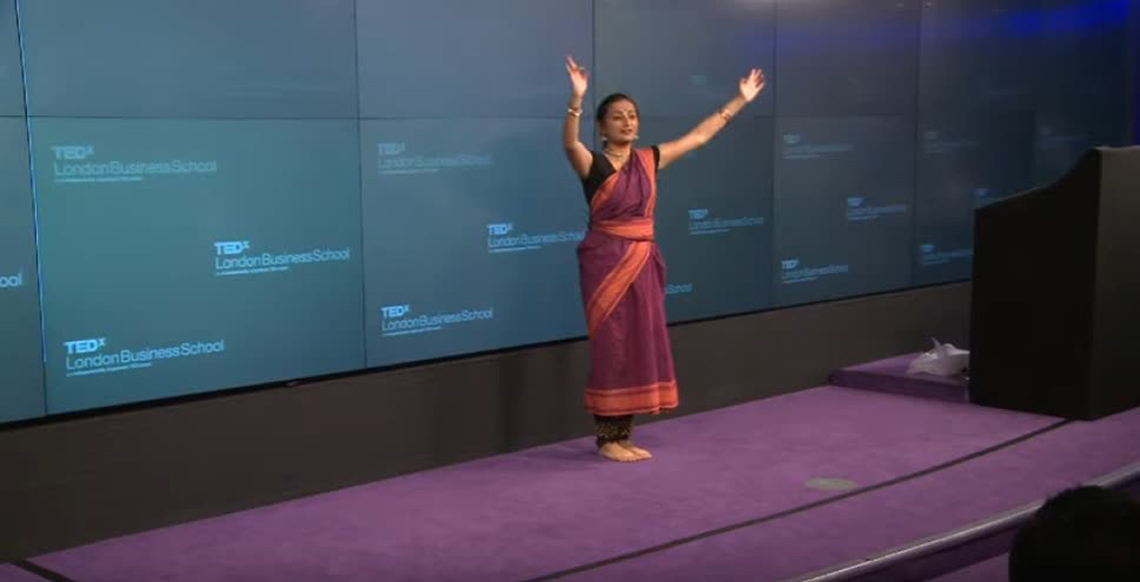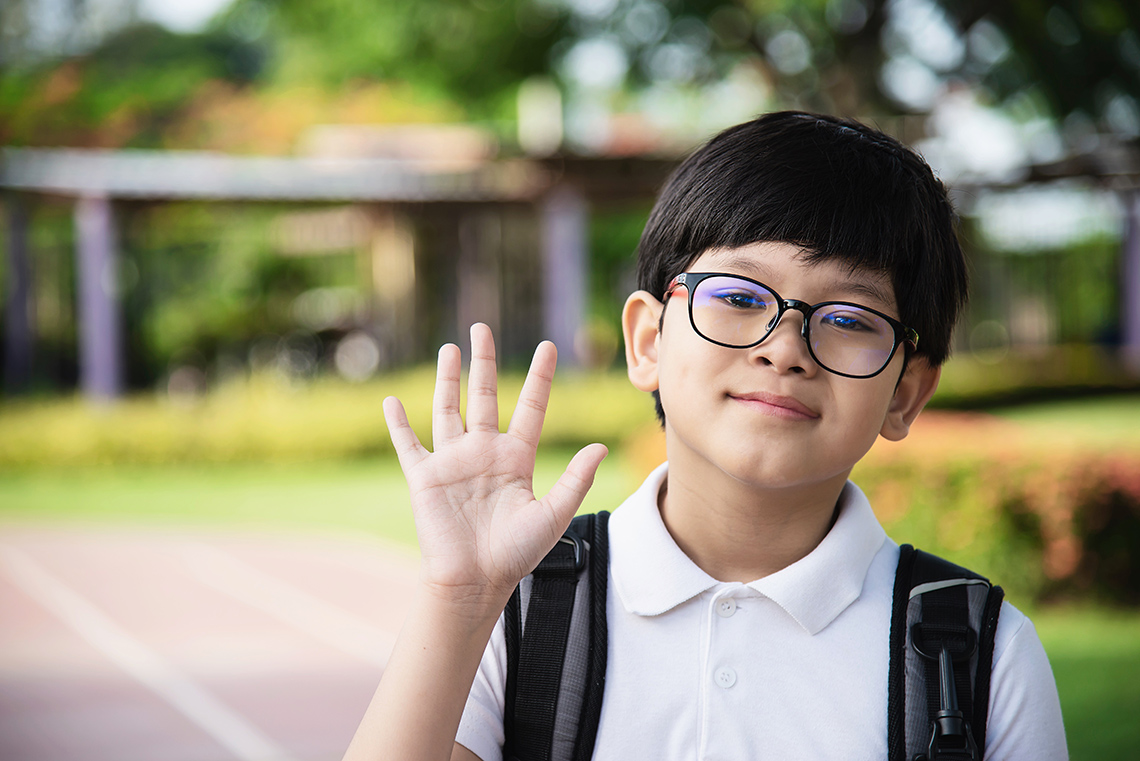Minds On
Today’s vocabulary
Press the following tabs to access the definitions for today’s vocabulary.
The parts of the body that are used to create movements. They can include head, shoulders, hands, hips, legs, feet, and more.
A movement of a body part or parts used to communicate feelings and ideas, with emphasis on the expressive aspects of the movement (e.g., tapping the foot to show boredom; raising the shoulders in a shrug to show not knowing or caring; raising eyebrows to show interest).
An element of dance involving rhythm, tempo, accent, and duration. Time can be based on measured beats, as in music, or on body rhythms, such as breath, emotions, and heartbeat.
The speed at which a dance is performed or music is played.
The force with which the body moves (e.g., light, strong, sustained, sudden).
Let’s get started!

Four children making different gestures to communicate a message. One kid making a thumbs up gesture to signal something is good or okay. One kid holding the index and middle fingers up in each hand to communicate a ‘peace’ gesture. One kid making a heart shape with both hands to gesture a heart or love. One kid making the gesture for ‘okay’ by holding the last three fingers in their hand up while the thumb and index fingers are making a circle.
How might someone use their body to communicate a message? What is a gesture that someone might use? Before answering these questions, let’s recall the definition of gesture.
Definition
Gesture
A gesture is a movement of a body part or body parts used to communicate feelings and ideas. For example, tapping the foot to show boredom, raising the shoulders in a shrug to show not knowing or caring.
Press the ‘Messages’ button to explore messages that could be communicated with gestures. You may also come up with your own message.
Message ideas can include the following:
- Everything is okay.
- I am not sure I understand.
- I like it!
- Please continue, I am interested!
Use a method of your choice to record your ideas about messages that could be communicated with gestures.
Action
Get ready, get set…
Movements can be used to communicate a message. People do this every day through gestures.

What is a gesture?
A gesture is a movement of a body part or body parts used to communicate feelings and ideas. For example, tapping the foot to show boredom, raising the shoulders in a shrug to show not knowing or caring.
Examine the following video clips of gestures that people use in everyday life.
Let’s explore the first video. In this video, the individual places the index finger of one hand in front of their lips. Someone might use this gesture to ask others to be quiet. Sometimes, this gesture is accompanied by a silent or audible “Shhh!” sound, which also has the same meaning.
Now, let’s examine another video.
In the second video, the individual is holding their hand up just above shoulder height and is moving it from side to side. They are also smiling. Someone might use this gesture to greet someone.
Gestures and dance
Stories have a beginning, middle, and end. The messages and ideas within a story are what help the reader to understand what is happening in each section.
Stories can be told through dance.
One way to tell stories through dance is by using gestures. Since there are no words to read in dance, gestures help to communicate the messages and ideas within a story.
Bharatanatyam dance is an example of gestures in action.
Bharatanatyam dance is a classical dance style from India.

A Bharatanatyam dancer wearing a vibrant costume and making a sculpture-like pose while seated. The dancer’s one leg is crossed on top of the other. One of the arms of the dancer is folded at chest height, with the index finger extended. The other arm is raised above their shoulder, and their index finger and thumb are extended. The dancer is smiling with their eyes closed.
Explore the following video of a Bharatanatyam dance that tells the story of “The Tortoise and the Hare.”
You will notice that this video includes the setting and the characters as part of the beginning of the story.
Consider how the tempo and energy of the gestures play a role in telling the story and ideas through dance.
Let’s review the following definitions before examining the video.
Definitions
Gestures
A movement of a body part or parts used to communicate feelings and ideas, with emphasis on the expressive aspects of the movement (e.g., tapping the foot to show boredom; raising the shoulders in a shrug to show not knowing or caring; raising eyebrows to show interest).
Tempo
The speed at which a dance is performed or music is played.
Energy
The force with which the body moves (e.g., light, strong, sustained, sudden).
Press the button ‘The Tortoise and the Hare’ to familiarize yourself with the story.
The Tortoise and the Hare

There once was a Tortoise and a Hare who lived in a forest. The Hare thought they were the fastest animal in the woods. While the Tortoise thought of themselves as slow and steady. One day the Hare challenged the Tortoise to a race. The Hare was sure they would win. Once the race began, the Hare was so far away from the Tortoise they decided to lay down and take a rest. After a while, the Hare woke up and continued their way to the finish line. As they got closer, they saw the Tortoise along with the other animals in the forest cheering. The Tortoise had won the race. As the Hare crossed the line, they congratulated the Tortoise, and the Tortoise reminded them, “slow and steady wins the race.”
Access the following video of a Bharatanatyam dance that tells the story of “The Tortoise and the Hare” and list some things you noticed the dancer performed, using gestures, in this beginning section of the dance.
Press the ‘Gestures’ button to access a list of gestures performed by the dancer.
The dancer performed the gestures for island, village, tress, river, butterfly, tortoise, hare.
Next, let’s focus on the trees, one of the dancer’s gestures and how it was used effectively within the dance.
The trees were part of the dancer’s description of the setting.

Bharatanatyam dancer making the tree gesture of “The Tortoise and the Hare” living story. The dancer is standing straight with both legs and feet together. Their arms are raised above their head and spread wide to represent lush trees.
Describe the tree gesture. What energy did the dancer use for this gesture? What tempo did the dancer use for this gesture?
Press the ‘Tree Gesture’ button to access an analysis of the tree gesture.
| Gesture | Trees |
|---|---|
| Description of gesture | The dancer raised their arms above their head and used a wave movement with their hands as they moved them towards the sides to represent the trees. |
| Description of energy used | The dancer used gentle, swaying energy. |
| Description of tempo used | The dancer used a fast-paced tempo. |
Go!
Now, it’s your turn!
Revisit the video of “The Tortoise and the Hare” story performed through Bharatanatyam dance one more time.
After you have examined the video, choose two new gestures that you noticed. Record your descriptions in the following chart provided or using another method or your choice.
Portfolio
Portfolio
Complete the Gestures Analysis Chart in your notebook or using the following fillable and printable document to record your descriptions of the two gestures you noticed from the Bharatanatyam dance video. If you would like, you can use speech-to-text or audio recording tools to record your thoughts. Consider adding your work to your dance portfolio.
Use the following chart to record your descriptions of the two different gestures you noticed from the Bharatanatyam dance video.
| Gesture | Description of gesture | Description of energy used | Description of tempo used |
|---|---|---|---|
| First gesture | |||
| Second gesture |
Press the ‘Activity’ button to access Gestures Analysis Chart.
Consolidation
Putting it all together

Portfolio
Review your learning
Use the following questions to reflect on your learning.
- Is gesture an effective way to communicate ideas from texts, such as in the story you explored of “The Tortoise and the Hare”? Explain your thinking.
- How might the story be different without gestures?
- How were the gestures for the Hare and the Tortoise different?
- Consider the elements of energy and time. Is one more important to gesture than the other?
Record your responses using a method of your choice. Consider adding your work to your portfolio.
Reflection
As you read through these descriptions, which sentence best describes how you are feeling about your understanding of this learning activity? Press the button that is beside this sentence.
I feel…
Now, record your ideas using a voice recorder, speech-to-text, or writing tool.
Press the ‘Discover More’ button to extend your skills.
Discover More
In this learning activity, you explored how gestures can be used to communicate ideas in dance.
Now, tell your own story using gestures!
You may select a story you have read before or one that you have written yourself.
Include different qualities of energy and tempos to emphasize your gestures clearly.
Use a method of your choice to share your story dance sequence.
If possible, try your story dance sequence.
Before you get started on your dance sequence, explore the following safety checklist.
Safety
Before you begin: